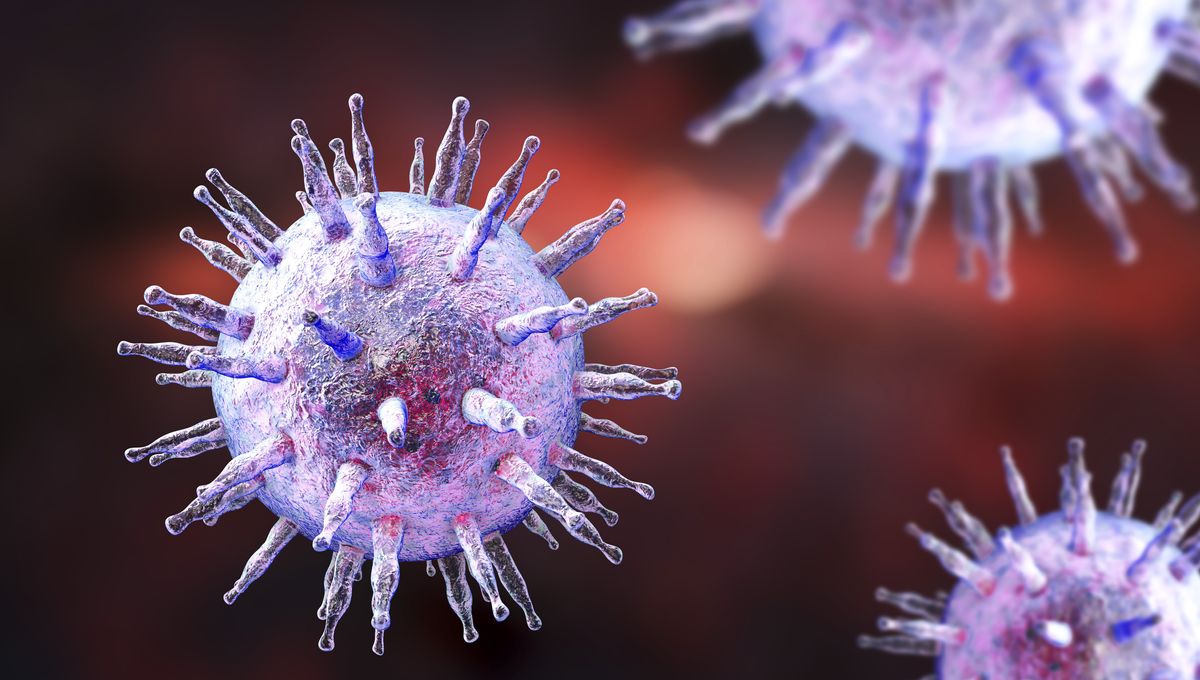
Epstein-Barr Virus (EBV) is very common, infecting at least 95 percent of adult humans. Infection doesn’t always cause symptoms, but it can cause infectious mononucleosis (aka glandular fever) and is linked to various conditions including multiple sclerosis and certain cancers. There’s currently no vaccine against EBV infection – but a new study has now presented a potential vaccine candidate, testing it in mice and human cells.
“We describe a vaccine formulation based on a lymph node targeting Amphiphile vaccine adjuvant, Amphiphile-CpG, admixed with EBV gp350 glycoprotein and an engineered EBV polyepitope protein that includes 20 CD8+ T cell epitopes from EBV latent and lytic antigens,” the authors write in their paper.
An amphiphile is a molecule that has both “water loving” and “fat loving” properties, and an adjuvant is an ingredient that helps a vaccine prompt a stronger immune response. The authors explain that “EBV gp350 is a predominant protein element of the EBV viral capsid responsible for mediating viral entry to host cells through interaction with complement receptor 2.”
An epitope is the part of an antigen that the immune system recognizes, and “EBVpoly is an engineered recombinant protein, precisely designed to encode 20 different conserved immunodominant CD8+ T cell epitopes derived from multiple EBV lytic and latent antigens.” CD8+ T cells are white blood cells that kill infected or damaged cells. The team of authors designed EBVpoly, describing it as having “a structure resembling ‘beads on a string’.”
EBV undergoes lytic replication, producing more virus particles. After EBV infection, the virus remains in the body in an inactive, or latent, state. “Inclusion of epitopes from both latent and lytic antigens is intended to promote generation of T cell responses directed to different phases of the EBV life cycle,” the authors explain, and “peptide epitopes restricted through multiple common HLA [human leukocyte antigen] class I alleles were included to allow broad worldwide coverage across multiple ethnic groups.”
“In vitro stimulation of human PBMCs [peripheral blood mononuclear cells] from healthy virus carriers with EBVpoly protein expanded polyfunctional CD8+ T cells which were directed to 2–5 epitopes derived from both latent and lytic EBV antigens,” the authors write.
In addition, “in vivo studies in HLA transgenic mice also demonstrated that in addition to T cell responses directed to EBVpoly protein, strong CD4+ and CD8+ T cell responses were also generated against gp350 suggesting a diverse response could be achieved in potential human vaccines.” The immune responses induced by the vaccine lasted over seven months in mice.
The authors also showed that “Adoptively transferred EBVpoly-stimulated T cells with or without gp350-specific antibodies […] controlled the progression of EBV lymphoma and associated outgrowth of EBV-transformed [lymphoblastoid cells] in spleen and peripheral blood,” saying that “these results confirm the activity of EBV-specific CD8+ T cells against EBV-transformed cancers.”
The study is published in the journal Nature Communications.
Source Link: New Epstein-Barr Virus Vaccine Candidate Shows Promise